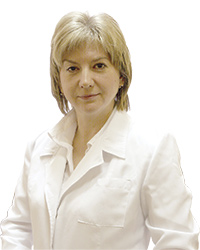What are varicose veins? How can we prevent and treat them?
A.Dovlatov, Orsha
A.Dovlatov, Orsha
 Varicosity, or varicose veins (from the Latin varix — node, swelling) is a constant and irreversible dilation and lengthening of the veins (the vessels bringing blood to the heart) of the lower extremities with thinning of the venous network and the development of nodes. Varicose veins are a common condition. Today, one in every three women and one in every ten men suffer from varicosity, and symptoms often appear at working age around 30-40 years. The more time people spend sitting in front of the computer or in a car, the higher the risk of them developing. It is a pressing problem for Belarus as, along with the USA, France and Great Britain, nearly 30-40 percent of the population suffers from the condition. Whereas in countries such as Africa and Mongolia there is a much lower level of incidence of less than 0.1 percent.
Varicosity, or varicose veins (from the Latin varix — node, swelling) is a constant and irreversible dilation and lengthening of the veins (the vessels bringing blood to the heart) of the lower extremities with thinning of the venous network and the development of nodes. Varicose veins are a common condition. Today, one in every three women and one in every ten men suffer from varicosity, and symptoms often appear at working age around 30-40 years. The more time people spend sitting in front of the computer or in a car, the higher the risk of them developing. It is a pressing problem for Belarus as, along with the USA, France and Great Britain, nearly 30-40 percent of the population suffers from the condition. Whereas in countries such as Africa and Mongolia there is a much lower level of incidence of less than 0.1 percent.
Why does it happen?
The main reasons for the development of varicose disease in the lower legs are:
heredity — people whose family members had frequent cases of varicose veins are in a high-risk group;
gender — for women, pregnancy exacerbates the problem as well as taking hormone therapy;
increased venous pressure (owing to an inactive way of life, lifting heavy loads and obesity).
These factors cause not only dilation of the veins, but also an increase in venous pressure or abnormality of the normal work of the venous valves. The correct blood circulation when the blood flows in the veins of the legs upwards is against the force of gravity. Several mechanisms are involved in the circulation: pressure of blood from the arteries (the most insignificant contribution), contraction of leg muscles in movement (it works like a pump) and the presence of valves in the veins which prevent any return flow of blood. The inability of these valves to fulfil their function causes abnormality of venous blood flow that leads to hyperextension of the veins. As a result, blood flow becomes chaotic, blood congests in the veins of the lower legs, especially under the skin, pressure increases so that the walls of vessels cannot withstand it and start to dilate and become thin.
People who are on their feet for lengthy periods (doctors, retailers, hairdressers, etc.), have a high risk of developing the condition. Varicosity among women can be linked to abnormalities in the endocrine profile — for example, incorrectly chosen hormonal contraception. Varicose veins of the pelvis, and also of the lower legs often happens during pregnancy, when pressure from the growing uterus on the veins of the abdominal cavity gradually increases, and this in turn, complicates blood outflow in the veins of the legs. In addition, an increase of intra-abdominal pressure when lifting weights, coughing, sneezing, chronic constipation etc. also leads to abnormality in the function of the venous valves, as does old age in general.
Symptoms of varicose veins
The first symptoms of varicose veins are swollen legs at the end of the day, a feeling of heaviness in the calves, appearing after a long period sitting or standing. The disappearance or considerable reduction of these symptoms when walking and after a night’s rest is characteristic in varicose disease. Later, sufferers may have spreading pains in the calves, a feeling of heat in the legs and night spasms in their calf muscles. Small blue or red vascular ‘spider webs’ may appear on the legs, and dark blue intradermal veins become visible. Finally, the saphenae can become wider and similar to bunches of overripe red grapes. If the problem is neglected, then there may additionally be the development of eczema on affected sites.
Diagnosis
If you have noticed the initial symptoms of varicose veins, you should consult a phlebotomist, an expert on veins. The successful treatment of varicose disease depends at what stage of its development people began treatment. The earlier you consult a phlebotomist, the easier the treatment, and risk of complications will decrease.
To be continued in next issue











